Home>Home Maintenance>How To Get Money For Home Repairs
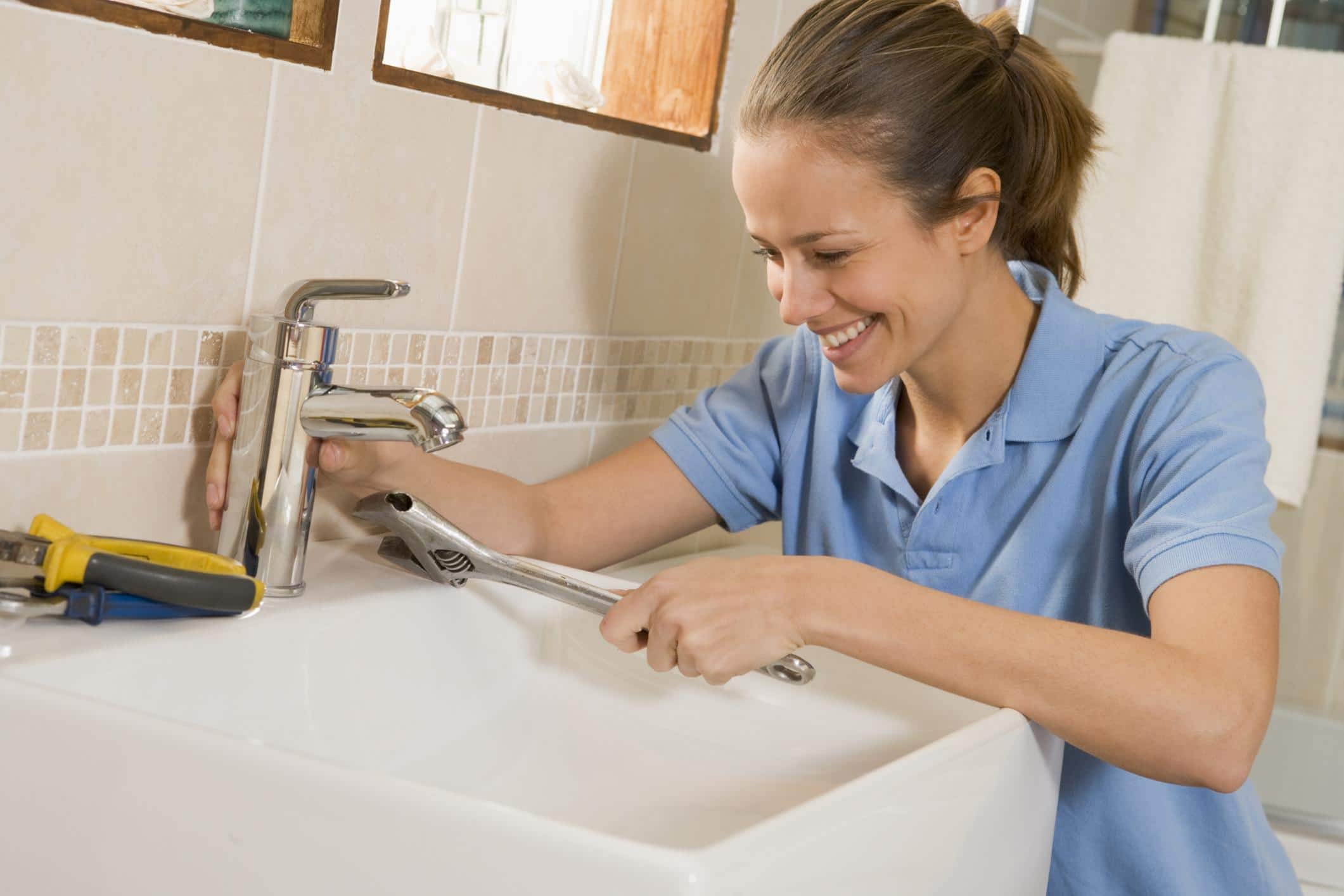

Home Maintenance
How To Get Money For Home Repairs
Modified: March 6, 2024
Need money for home repairs? Learn how to finance your home maintenance projects and get the funds you need with our expert tips and advice.
(Many of the links in this article redirect to a specific reviewed product. Your purchase of these products through affiliate links helps to generate commission for Storables.com, at no extra cost. Learn more)
Introduction
Welcome to our comprehensive guide on how to get money for home repairs. Owning a home is a rewarding experience, but it also comes with the responsibility of maintenance and repairs. Whether you’re dealing with a leaky roof, a malfunctioning HVAC system, or outdated plumbing, it’s crucial to address these issues promptly to maintain the value and safety of your home.
However, the cost of home repairs can often be a significant financial burden. That’s where this guide comes in. We will provide you with valuable tips and insights on assessing the scope of your home repairs, identifying the cost involved, creating a realistic budget, and exploring various financing options available to you. With the right knowledge and strategies, you can find the financial resources needed to tackle your home repairs efficiently.
Before we dive into the details, let’s emphasize the importance of assessing the scope of your home repairs. It’s crucial to understand the extent of the problem before looking for funding sources. Some repairs may be minor and manageable on a tight budget, while others may require more substantial financial assistance.
In the next section, we will guide you in assessing the scope of your home repairs, helping you identify which repairs are critical and which can be prioritized for a later time. By doing so, you’ll have a better understanding of the financial resources required and can plan accordingly.
Key Takeaways:
- Assess the urgency and cost of home repairs by inspecting, prioritizing, and budgeting for the necessary work. This helps plan for unforeseen expenses and ensures a clear understanding of the financial resources required.
- Explore financing options such as loans, grants, and crowdfunding to fund home repairs. Research and compare different options to find the best fit for your financial situation and repair needs.
Read more: How To Get Money For Home Improvement
Assessing the Scope of Home Repairs
When it comes to home repairs, it’s essential to prioritize and assess the scope of the work required. This will help you determine the urgency of the repairs and understand the financial resources needed to get the job done. Here are some key steps to help you in assessing the scope of your home repairs:
- Inspection: Start by conducting a thorough inspection of your home. Take note of any visible damage, such as leaks, cracks, or structural issues. Also, consider the age of your home and its components, as older homes may require more extensive repairs.
- Prioritize Repairs: Once you’ve identified the repairs needed, prioritize them based on urgency. Focus on repairs that impact the safety, functionality, or security of your home, such as fixing faulty electrical wiring or addressing plumbing leaks.
- Consult Professionals: In some cases, it may be necessary to consult professionals, such as plumbers, electricians, or contractors, to assess the scope of the repairs accurately. They can provide expertise and guidance on the work required and offer estimates on the cost involved.
- Consider Long-Term Maintenance: While addressing immediate repairs is crucial, it’s also essential to consider long-term maintenance to prevent further issues down the line. This may include tasks such as roof maintenance, gutter cleaning, or regular HVAC system check-ups.
- Plan for Unforeseen Issues: Keep in mind that during the repair process, unforeseen issues may arise. It’s important to have some flexibility in your budget to accommodate these surprises. A contingency fund of 10-15% of the total repair cost is a good rule of thumb.
By taking these steps, you can gain a clear understanding of the scope and urgency of your home repairs. This will serve as a foundation when it comes to budgeting and exploring financing options, which we will discuss in the following sections.
Identifying the Cost of Home Repairs
Once you have assessed the scope of your home repairs, the next crucial step is to identify the cost involved. Understanding the financial implications will help you plan your budget and explore appropriate funding options. Here are some key steps to help you in identifying the cost of your home repairs:
- Get Multiple Quotes: Reach out to several contractors and professionals in the industry to get multiple quotes for the repair work. This will give you a better idea of the average cost for your specific repairs and help you avoid overpaying.
- Consider Material Costs: Take into account the cost of materials needed for the repairs, such as roofing materials, plumbing fixtures, or electrical components. Research the prices and factor them into your overall cost estimation.
- Include Labor Costs: Don’t forget to factor in the cost of labor when estimating the total cost. The complexity of the repair work, the time required, and the experience level of the professionals can all impact the labor cost.
- Account for Permit Fees: Depending on the type of repair work, you may need to obtain permits from your local authorities. These permits often come with a fee, so make sure to include them in your cost estimation.
- Consider Hidden Costs: Be aware of any potential hidden costs that may arise during the repair process, such as uncovering additional damage or unexpected structural issues. Having a contingency fund will help you address these unforeseen expenses if they arise.
- Research Market Rates: Take the time to research market rates for similar repair work in your area. This will help you gauge whether the quotes you receive are reasonable and ensure that you’re getting a fair price.
Remember that the cost of home repairs can vary significantly depending on factors such as the size of your home, the complexity of the repairs, the materials used, and the location. By diligently researching and considering these factors, you’ll be able to more accurately estimate the cost of your home repairs.
Creating a Budget for Home Repairs
Now that you have assessed the scope of your home repairs and identified the cost involved, it’s time to create a budget. A well-planned budget will help you manage your expenses and allocate funds appropriately. Here are some important steps to create a budget for your home repairs:
- Evaluate Your Finances: Start by evaluating your current financial situation. Take into account your income, savings, and any existing debts or financial commitments. Knowing your financial capacity will help you determine how much you can allocate to your home repairs.
- Set Priorities: Prioritize your repairs based on urgency and importance. Focus on critical repairs that affect the safety and functionality of your home first. Identify the repairs that can be deferred or performed in stages to make the budget more manageable.
- Estimate the Total Cost: Using the information gathered from assessing the scope of repairs and identifying the cost, estimate the total cost required to complete all the necessary repairs. Make sure to include material costs, labor costs, permit fees, and any additional expenses.
- Break it Down: Break down the total cost into smaller, more manageable chunks. Create a detailed list of the repairs and their estimated costs. This will give you a clearer picture of how much you need to budget for each repair and help you prioritize your spending.
- Consider Financing Options: If the total cost of repairs exceeds your available funds, consider exploring financing options such as home repair loans, grants, or government assistance programs. Keep in mind the interest rates, repayment terms, and eligibility criteria when evaluating these options.
- Create a Timeline: Determine the timeframe for completing the repairs. Assess the urgency of each repair and take into account any factors that may impact the timeline, such as seasonal limitations or contractor availability.
- Review and Adjust: Regularly review and adjust your budget as needed. Unexpected expenses or changes to the scope of repairs may require you to revise your budget. Stay flexible and make adjustments accordingly.
Creating a budget for your home repairs is essential to ensure that you can manage the costs effectively and complete the repairs within your financial means. Remember to be realistic and flexible in your budgeting process, and don’t hesitate to seek financial assistance if needed.
Exploring Financing Options for Home Repairs
When it comes to financing home repairs, there are various options available to homeowners. Exploring these options can help you secure the necessary funds to carry out the needed repairs. Here are some common financing options to consider:
- Home Repair Loans: One option is to apply for a home repair loan. These loans are specifically designed to cover the costs of home repairs and renovations. They typically have favorable interest rates and repayment terms. Research different lenders, compare loan options, and select the one that best fits your financial situation.
- Home Equity Line of Credit (HELOC): If you have built up equity in your home, you can consider a home equity line of credit. This type of loan allows you to borrow against the value of your home. HELOCs often have lower interest rates and flexible repayment options.
- Personal Loans: Personal loans can be used for various purposes, including home repairs. They can be secured or unsecured, and the interest rates and terms may vary depending on your credit score and financial history. Shop around and compare different lenders to find the best personal loan option for your needs.
- Government Assistance Programs: There are various government assistance programs available to help homeowners with home repairs. These programs may offer grants, loans, or subsidies based on your income level, location, or specific circumstances. Research local and federal programs to see if you qualify for any assistance.
- Insurance Coverage: Check your homeowner’s insurance policy to see if the repairs you need are covered. Certain damages caused by specific events, such as natural disasters, may be covered by insurance. Read the policy carefully and contact your insurance provider to understand the coverage and process for filing claims.
- Crowdfunding: In some cases, homeowners turn to crowdfunding platforms to raise funds for home repairs. Online platforms allow individuals to seek support from friends, family, and even strangers who are willing to contribute towards the repair costs. Create a compelling campaign outlining your repair needs and share it across social media to maximize exposure.
- Savings and Budgeting: If feasible, consider using your savings to cover home repair costs. Prioritize saving money specifically for home maintenance and repairs to avoid going into debt. Budgeting your finances can also help you allocate money towards repairs over time.
Remember to carefully review the terms and conditions, interest rates, and repayment options for any financing option you choose. Assess your financial situation and choose the option that best aligns with your needs and capabilities.
By exploring these financing options, you can find the funding necessary to complete your home repairs and ensure the continued comfort and safety of your home.
Read more: How To Get Money For Home Renovation
Applying for Government Assistance Programs
If you’re in need of financial assistance for home repairs, one option to consider is applying for government assistance programs. These programs are designed to provide support to homeowners who may not have the means to fund repairs on their own. Here are some steps to help you navigate the process of applying for government assistance:
- Research Available Programs: Start by researching the various government assistance programs available in your area. Some programs are offered at the federal level, while others may be specific to your state or local municipality. Look for programs that are tailored to home repairs and renovations.
- Determine Eligibility: Each assistance program will have its own set of eligibility criteria. These criteria may be based on factors such as income level, property value, age, or specific circumstances. Review the requirements carefully to determine if you meet the eligibility criteria.
- Gather Required Documentation: Once you’ve identified the programs you’re eligible for, gather the necessary documentation. This may include proof of income, property ownership, identification, and any other supporting documents specified by the program. Ensure that you have all the required paperwork in order before proceeding with the application.
- Complete the Application: Start the application process by completing the required forms accurately and thoroughly. Pay close attention to any instructions or guidelines provided by the program. Double-check your application for completeness and review it for any errors before submitting.
- Submit the Application: Follow the instructions provided by the program on how and where to submit your application. Some programs may require you to submit the application online, while others may have specific submission locations or offices. Be sure to meet any deadlines and keep copies of all submitted documents.
- Follow Up: After submitting your application, it’s important to follow up with the program to ensure it was received and is being processed. Keep track of any reference numbers or contact information provided to facilitate communication. Be prepared to provide any additional information or documentation if requested.
- Be Patient: Government assistance programs often have a high number of applicants, and processing times can vary. It’s important to be patient and allow for sufficient time for your application to be reviewed. Follow up periodically to check on the status of your application.
Keep in mind that government assistance programs may have limited funding or specific timelines for application periods. Be proactive in researching and applying for these programs to increase your chances of receiving assistance.
By applying for government assistance programs, you can potentially access financial support to help cover the costs of your home repairs and ensure the safety and livability of your home.
Consider applying for a home improvement loan or a home equity line of credit to get the money you need for repairs. These options can provide the funds you need at a reasonable interest rate.
Utilizing Home Repair Loans
If you’re in need of funds for home repairs but don’t have immediate access to cash, home repair loans can be a viable financing option. These loans are specifically designed to help homeowners cover the costs of repairs and renovations. Here’s what you need to know about utilizing home repair loans:
- Types of Home Repair Loans: There are various types of home repair loans available, including government-backed loans, home equity loans, and personal loans. Each type has its own set of requirements and terms, so it’s important to research and understand the options available to you.
- Government-Backed Loans: Government-backed loans, such as those offered by the Federal Housing Administration (FHA) or the Department of Veterans Affairs (VA), are available to eligible homeowners. These loans typically have lower interest rates and more flexible qualification criteria, making them an attractive option for those in need of financial assistance.
- Home Equity Loans: If you have built up significant equity in your home, a home equity loan allows you to borrow against that equity. The loan amount is determined by the value of your home and the amount of equity available. Home equity loans typically have fixed interest rates and repayment terms.
- Personal Loans: Personal loans are unsecured loans that can be used for various purposes, including home repairs. These loans are typically based on your creditworthiness and income level. It’s important to shop around and compare interest rates and repayment terms from different lenders to find the best deal.
- Application Process: To apply for a home repair loan, you will typically need to provide documentation such as proof of income, credit history, and details about the repairs you plan to undertake. Lenders will evaluate your application and determine the loan amount, interest rate, and repayment terms based on their assessment.
- Repayment: It’s crucial to understand the repayment terms of the loan before committing. Make sure to review the interest rate, monthly payment amount, and the total repayment period. Be aware of any penalties for early repayment or late payments and budget accordingly.
- Considerations: Before utilizing a home repair loan, carefully consider your financial situation. Can you comfortably afford the monthly payments? Will the cost of the repairs be worth the investment in the long run? It’s important to weigh the pros and cons and assess the overall impact on your financial well-being.
Utilizing a home repair loan can provide the necessary funds to address critical repairs and maintain the value of your home. However, it’s essential to do your due diligence, compare loan options, and ensure that you can comfortably meet the repayment obligations.
Consult with several lenders, review the terms and conditions, and choose a loan that best suits your needs and financial capabilities. By utilizing a home repair loan effectively, you can complete necessary repairs with the peace of mind that comes from a well-maintained home.
Seeking Grants for Home Repairs
If you’re in need of financial assistance for home repairs and renovations, seeking grants can be a valuable option. Grants are funds provided by government agencies, charitable organizations, or private foundations and do not need to be repaid. Here’s what you need to know about seeking grants for home repairs:
- Research Available Grants: Start by researching the grants available for home repairs in your area. Explore government programs, local community organizations, and national foundations that offer grants specifically for home repairs and renovations. Understand the eligibility criteria, application process, and deadlines for each grant.
- Eligibility Requirements: Grants typically have specific eligibility requirements that you must meet to qualify. These requirements can include factors such as your income level, property location, age, or specific circumstances. Ensure that you meet the criteria before proceeding with the application process.
- Complete the Application: Once you have identified suitable grants, complete the application forms accurately and thoroughly. Provide all requested documentation, such as proof of income, property ownership, estimates for repairs, and any other supporting materials. Pay attention to any specific instructions provided by the grant program.
- Write a Compelling Proposal: Many grant applications require a detailed proposal outlining the repairs needed, the impact on your home and community, and the financial need. Craft a compelling narrative that highlights the importance of the repairs and demonstrates how it aligns with the grant program’s mission and goals.
- Documentations and References: Gather any necessary documentation and references to support your application. This may include letters from contractors, evidence of previous repair attempts, or testimonials from community members. Compile these materials in an organized and professional manner.
- Follow Up: After submitting your application, follow up with the grant program to ensure it was received and is being processed. Maintain open lines of communication and be prepared to provide any additional information or documentation if requested. Stay patient as grant programs often have a thorough review process.
- Explore Multiple Options: It’s advisable to apply for multiple grants to increase your chances of approval. Grants can be competitive, and not all applications may be successful. Diversify your grant applications and consider different programs that align with your needs and circumstances.
Remember, the process of seeking grants for home repairs requires research, preparation, and patience. Understand that grants may have limited funding, and not all applicants will be successful. However, with perseverance and a well-crafted application, you may secure the funds needed to complete your home repairs without the burden of repayment.
Be diligent in your search, follow the guidelines provided by the grant programs, and leverage the support of community organizations or nonprofit agencies that assist homeowners with grant applications. By seeking grants for home repairs, you can potentially access financial support and ensure the safety and longevity of your home.
Crowdfunding for Home Repairs
When it comes to funding home repairs, crowdfunding can be an innovative and community-driven solution. Crowdfunding involves reaching out to family, friends, and even strangers through online platforms to raise funds for your specific needs. Here’s what you need to know about crowdfunding for home repairs:
- Choose a Crowdfunding Platform: Start by selecting a reputable crowdfunding platform that specializes in personal causes or home improvement projects. Platforms like GoFundMe, Kickstarter, and Indiegogo are popular choices that allow you to create a campaign and share your story.
- Create a Compelling Campaign: Craft a compelling and engaging campaign that outlines your home repair needs. Explain the specific repairs required, the impact it will have on your home and family, and why the project is important to you. Use a mix of text, images, and videos to effectively communicate your story.
- Set a Realistic Funding Goal: Determine the amount of money you need to raise for your home repairs. Be realistic in setting your funding goal and provide a breakdown of the costs involved. This will give potential donors confidence in your campaign and its financial transparency.
- Share Your Campaign Widely: Utilize your social networks, email contacts, and community groups to share your crowdfunding campaign. Leverage the power of social media to spread the word and engage with your audience. Encourage others to share your campaign to increase its reach.
- Engage Donors and Provide Updates: Show gratitude to your donors by thanking them personally and publicly on your campaign page and social media platforms. Keep your supporters updated on the progress of your repairs, sharing photos or videos of the work being done. Regular updates will help maintain donor trust and engagement.
- Offer Incentives: Consider offering incentives or rewards to donors at different contribution levels. These can range from personalized thank-you messages to exclusive updates, experiences, or merchandise related to your home repairs. Incentives can incentivize individuals to donate and increase the overall success of your campaign.
- Express Your Gratitude: After successfully raising funds and completing your home repairs, express your gratitude to your supporters. Provide a final update, share before-and-after photos, and personally thank everyone who contributed to your campaign. Maintaining good relationships with your donors can open the door for future support.
Crowdfunding for home repairs is a powerful way to rally support from your community and beyond. It allows you to tap into the goodwill and generosity of others who are willing to help you with your home repair endeavors.
Remember to stay engaged and maintain transparency throughout the process. Keep your supporters updated on your progress and express sincere gratitude for their contributions. With a well-executed crowdfunding campaign, you can successfully fund your home repairs and create a community of supporters who are invested in your journey.
Read more: How To Save Money On Home Renovation
Negotiating with Contractors
When undertaking home repairs, negotiating with contractors is a crucial step to ensure you receive fair pricing and quality workmanship. Here are some tips to help you navigate the negotiation process:
- Research and Gather Quotes: Start by researching different contractors and obtaining multiple quotes for your repair project. This will give you an understanding of the average cost and help you make a well-informed negotiation.
- Clearly Define the Scope of Work: Provide a detailed description of the repairs needed and the desired outcome. This will help contractors understand the extent of the project and provide accurate estimates.
- Ask for Breakdowns: Request a breakdown of the costs involved in the project. Contractors should provide transparency in their pricing, including material costs, labor charges, permits, and any additional fees.
- Compare Quotes and Negotiate: Once you have received quotes from multiple contractors, compare them side by side. Look for discrepancies in pricing or services offered. Use this information as leverage when negotiating with contractors.
- Look Beyond Price: While price is an essential factor in negotiating, also consider the contractor’s reputation, experience, and references. A slightly higher price may be justified if the contractor has a proven track record of quality workmanship.
- Be Prepared to Negotiate: Approach negotiations with confidence and be prepared to make counteroffers. Be respectful but firm in expressing your budget limitations and expectations. Contractors may be willing to negotiate lower prices or offer additional services to secure the project.
- Request a Written Agreement: Once you reach an agreement with a contractor, make sure to receive a written contract detailing the scope of work, timelines, payment terms, and any warranties or guarantees. Having everything in writing protects both parties and ensures clarity.
- Consider a Payment Schedule: Discuss a payment schedule that reflects the progress of the work. Consider making a deposit upfront and subsequent payments upon reaching specific milestones. This provides security and encourages timely completion of the project.
- Communicate Openly: Maintain open and honest communication with your chosen contractor. Discuss any concerns or changes that may arise during the project. Good communication fosters a positive working relationship and helps avoid misunderstandings.
- Review the Work and Provide Feedback: Once the repairs are complete, carefully inspect the work and provide constructive feedback to the contractor. If any issues arise, discuss them promptly and seek resolution. This ensures that you are satisfied with the final outcome.
Remember, negotiating with contractors is a normal part of the home repair process. By doing thorough research, being prepared, and maintaining effective communication, you can secure a fair and favorable agreement with a contractor for your home repair needs.
Keep in mind that the focus should not solely be on getting the lowest price, but also on finding a qualified contractor who can deliver quality workmanship and meet your expectations. Striking the right balance will result in a successful repair project and a positive contractor-client relationship.
Conclusion
Home repairs are an inevitable part of homeownership, and finding the necessary funds to address these repairs can sometimes be a challenge. However, with careful planning and a thorough understanding of your options, you can navigate the process of financing your home repairs successfully.
We started this guide by emphasizing the importance of assessing the scope of your home repairs. By understanding the urgency and extent of the repairs needed, you can make informed decisions about prioritizing and budgeting for the repairs.
Identifying the cost of your home repairs is crucial for creating a realistic budget. By obtaining multiple quotes, considering material costs and labor fees, and accounting for unforeseen expenses, you can develop a comprehensive budget that aligns with your financial capabilities.
Exploring financing options such as home repair loans, government assistance programs, or personal savings can provide the necessary funds to tackle your repairs. Each option has its own advantages and considerations, so it’s important to evaluate them based on your unique circumstances.
Additionally, seeking grants or crowdfunding for your home repairs can be viable alternatives, allowing you to tap into community support or financial assistance programs. These options provide opportunities to receive funds without incurring debt.
When it comes to negotiating with contractors, research, clear communication, and preparedness are key. By comparing quotes, defining the scope of work, and engaging in open discussions, you can secure fair pricing and ensure the quality of the repairs.
In conclusion, financing your home repairs requires a combination of research, careful planning, and effective communication. By assessing the scope of the repairs, identifying the cost, exploring financing options, and negotiating with contractors, you can successfully fund and complete your home repair projects.
Remember to stay proactive, seek assistance when needed, and prioritize the repairs based on urgency. A well-maintained home not only ensures your comfort and safety but also protects the value of your investment in the long run.
With the knowledge and resources provided in this guide, you are well-equipped to take on the challenge of funding your home repairs and maintaining your home for years to come.
Frequently Asked Questions about How To Get Money For Home Repairs
Was this page helpful?
At Storables.com, we guarantee accurate and reliable information. Our content, validated by Expert Board Contributors, is crafted following stringent Editorial Policies. We're committed to providing you with well-researched, expert-backed insights for all your informational needs.
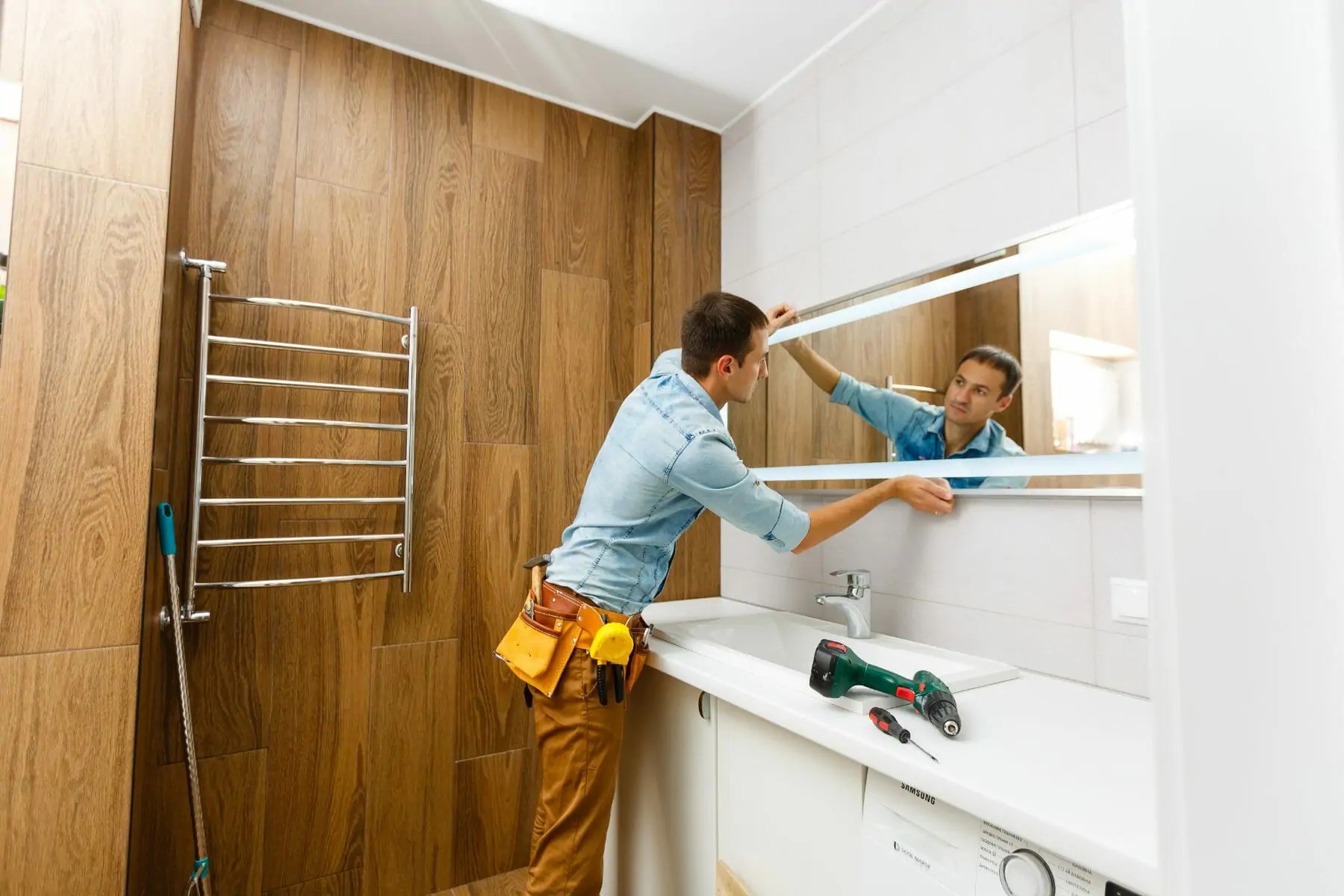
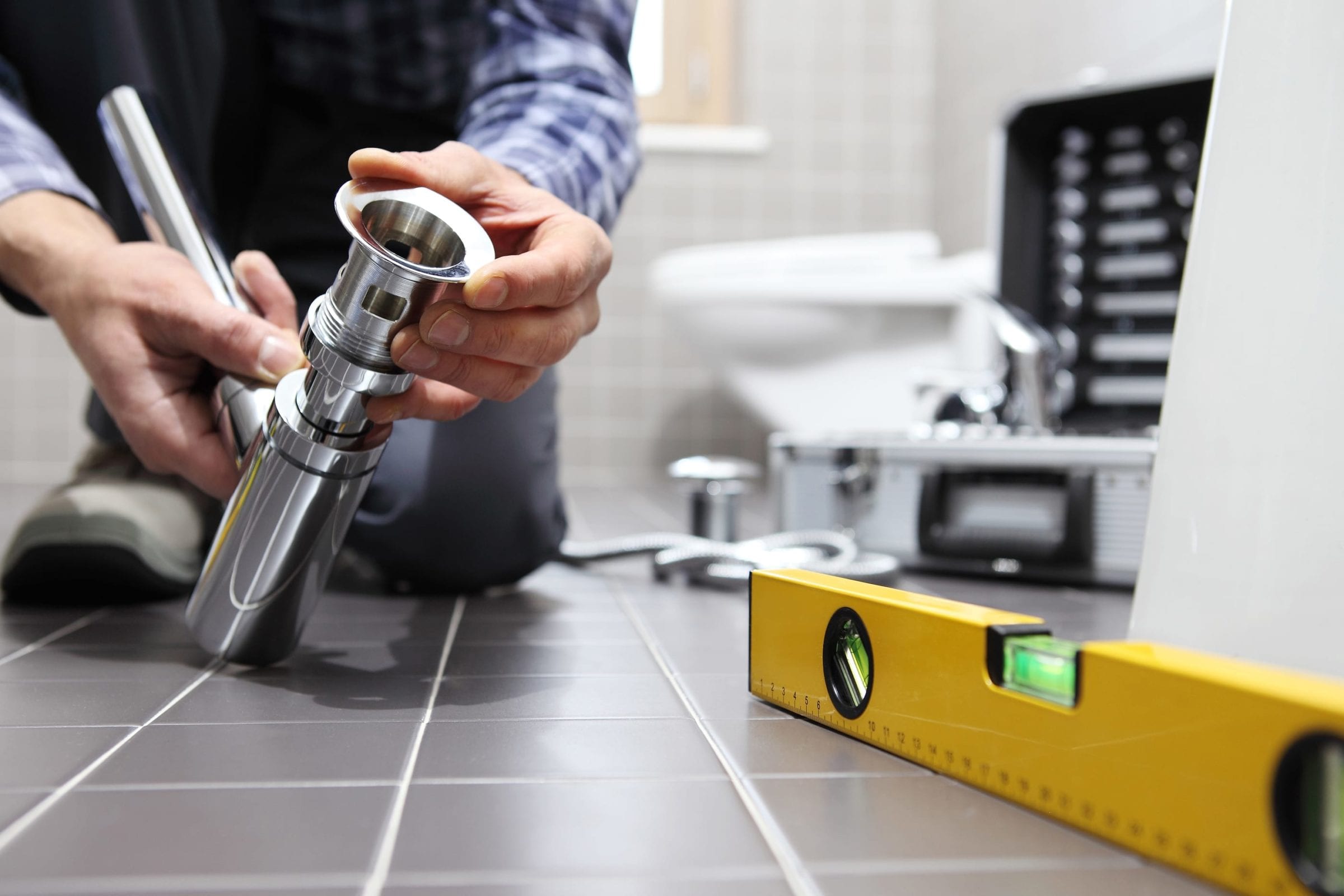


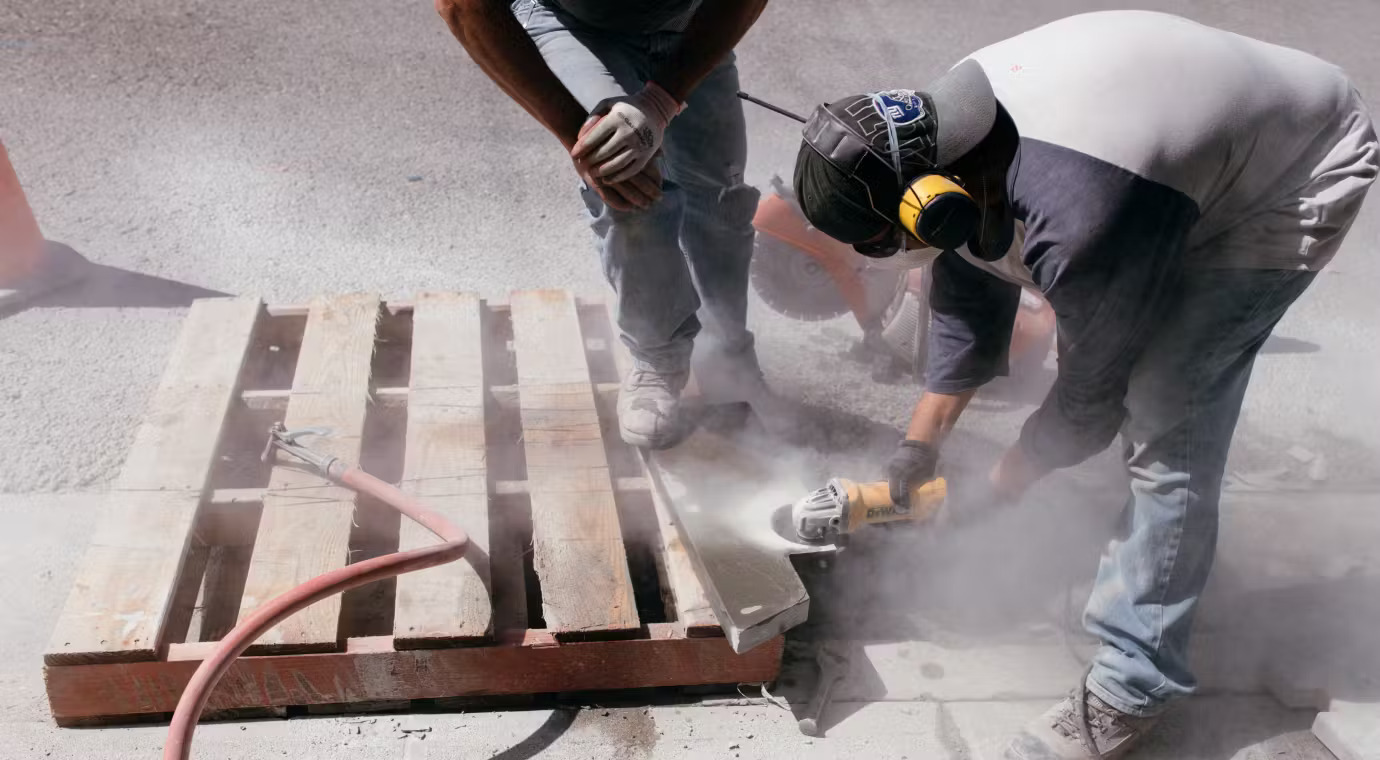


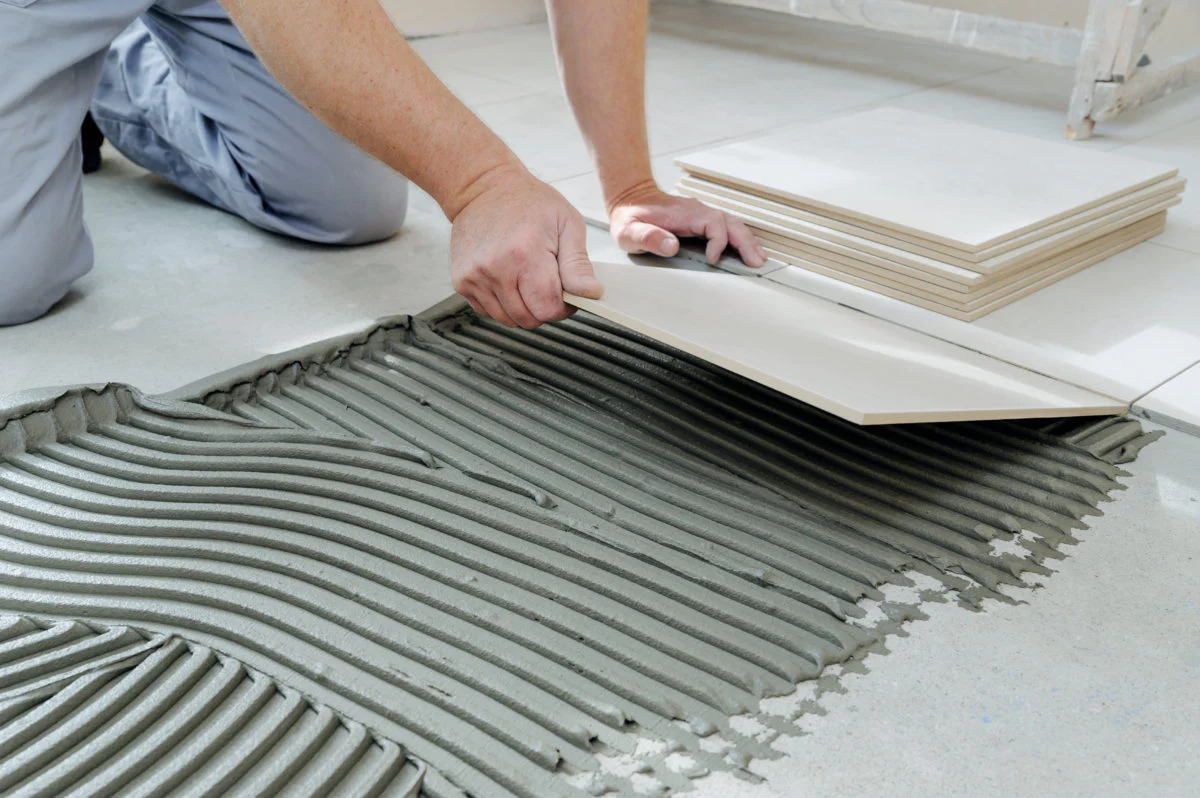




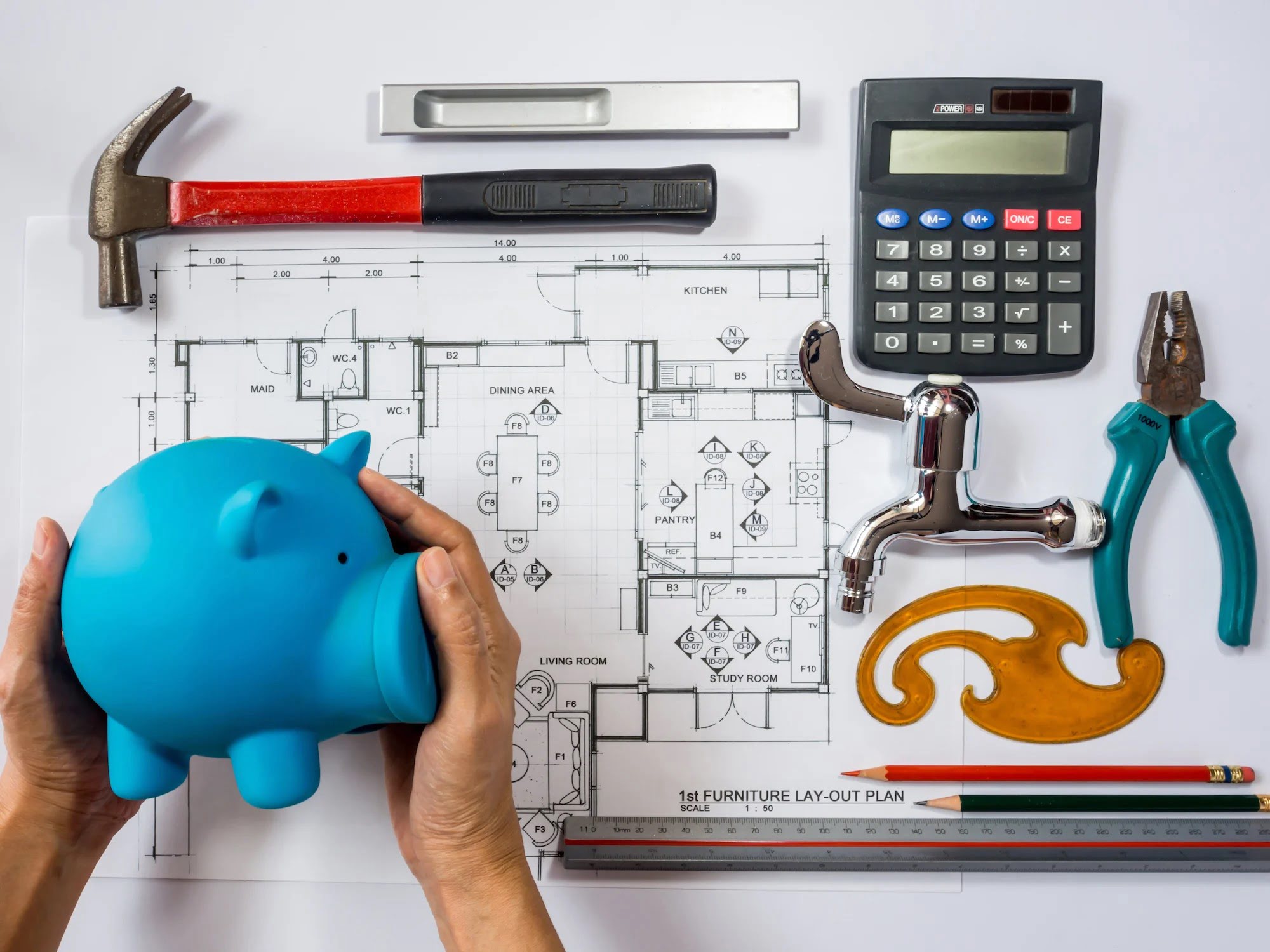

0 thoughts on “How To Get Money For Home Repairs”